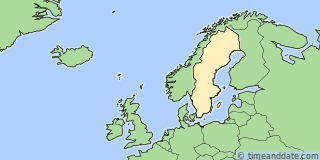Mar 30, 2025, 2:00 am
Mar 28
Forward 1 hour
Mar 28, 2010 - Daylight Saving Time Started
When local standard time was about to reach
Sunday, March 28, 2010, 2:00:00 am clocks were turned forward 1 hour to
Sunday, March 28, 2010, 3:00:00 am local daylight time instead.
Sunrise and sunset were about 1 hour later on Mar 28, 2010 than the day before. There was more light in the evening and less light in the morning.
Also called Spring Forward, Summer Time, and Daylight Savings Time.
Oct 31
Back 1 hour
Oct 31, 2010 - Daylight Saving Time Ended
When local daylight time was about to reach
Sunday, October 31, 2010, 3:00:00 am clocks were turned backward 1 hour to
Sunday, October 31, 2010, 2:00:00 am local standard time instead.
Sunrise and sunset were about 1 hour earlier on Oct 31, 2010 than the day before. There was more light in the morning and less light in the evening.
Also called Fall Back and Winter Time.
More info:
Daylight Saving Ends in Europe on October 31, 2010
When Does DST Start and End in Sweden?
The DST period starts on the last Sunday of March and ends on the last Sunday of October, together with most other European countries.
First Used in 1916
Sweden has been using Daylight Saving Time (DST) every year since 1980. Since 1996, the country follows the European Union's DST schedule.
However, like many other European countries, Sweden first changed its clocks during World War I. The country's initial DST switch was in 1916, just days after Germany had become the world's first country to introduce the measure.
However, DST was abolished again in the year after, and it was not used until 1980, when it was reinstated as a reaction to the oil crisis of 1973.
Daylight Saving Time History in Sweden
- Sweden first observed Daylight Saving Time in 1916.
- Sweden has observed DST for 46 years between 1916 and 2024.
- Previous time with no Daylight Saving Time was 1979.
- See Worldwide DST Statistics
